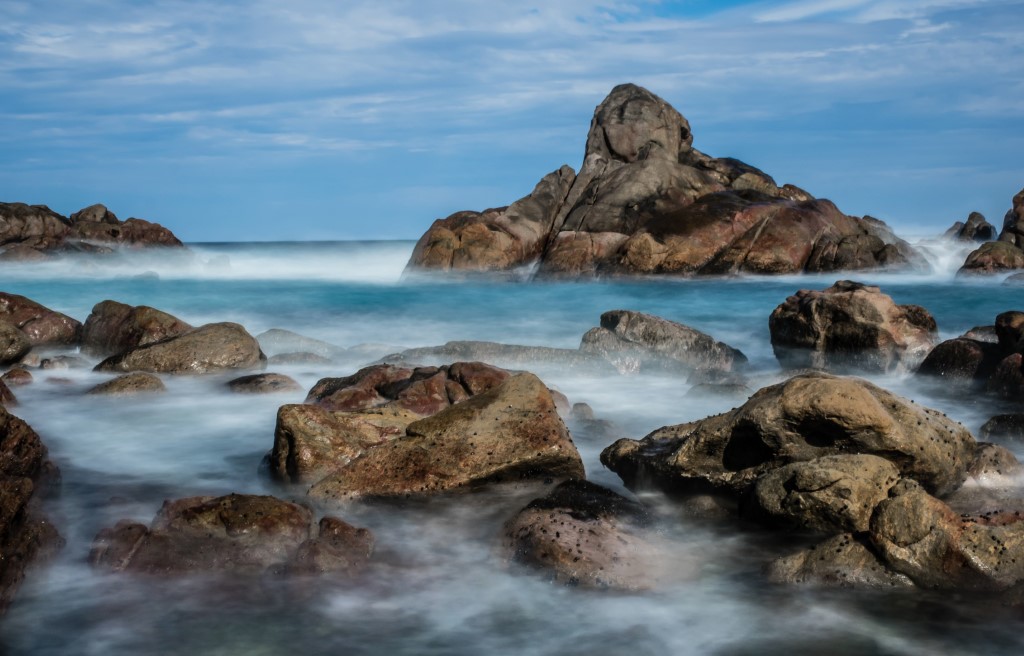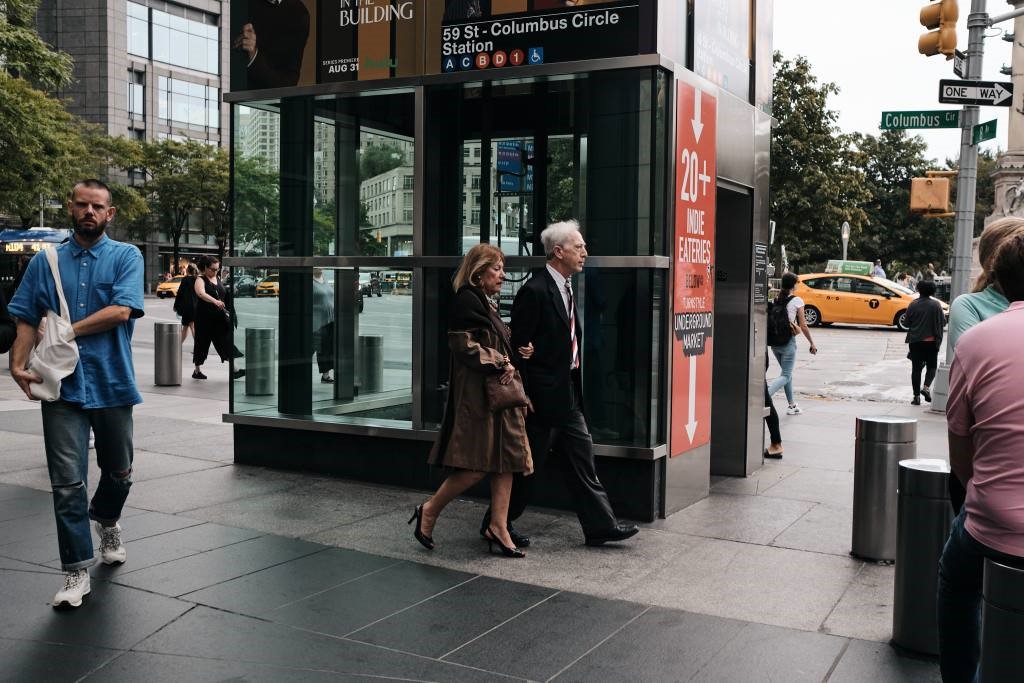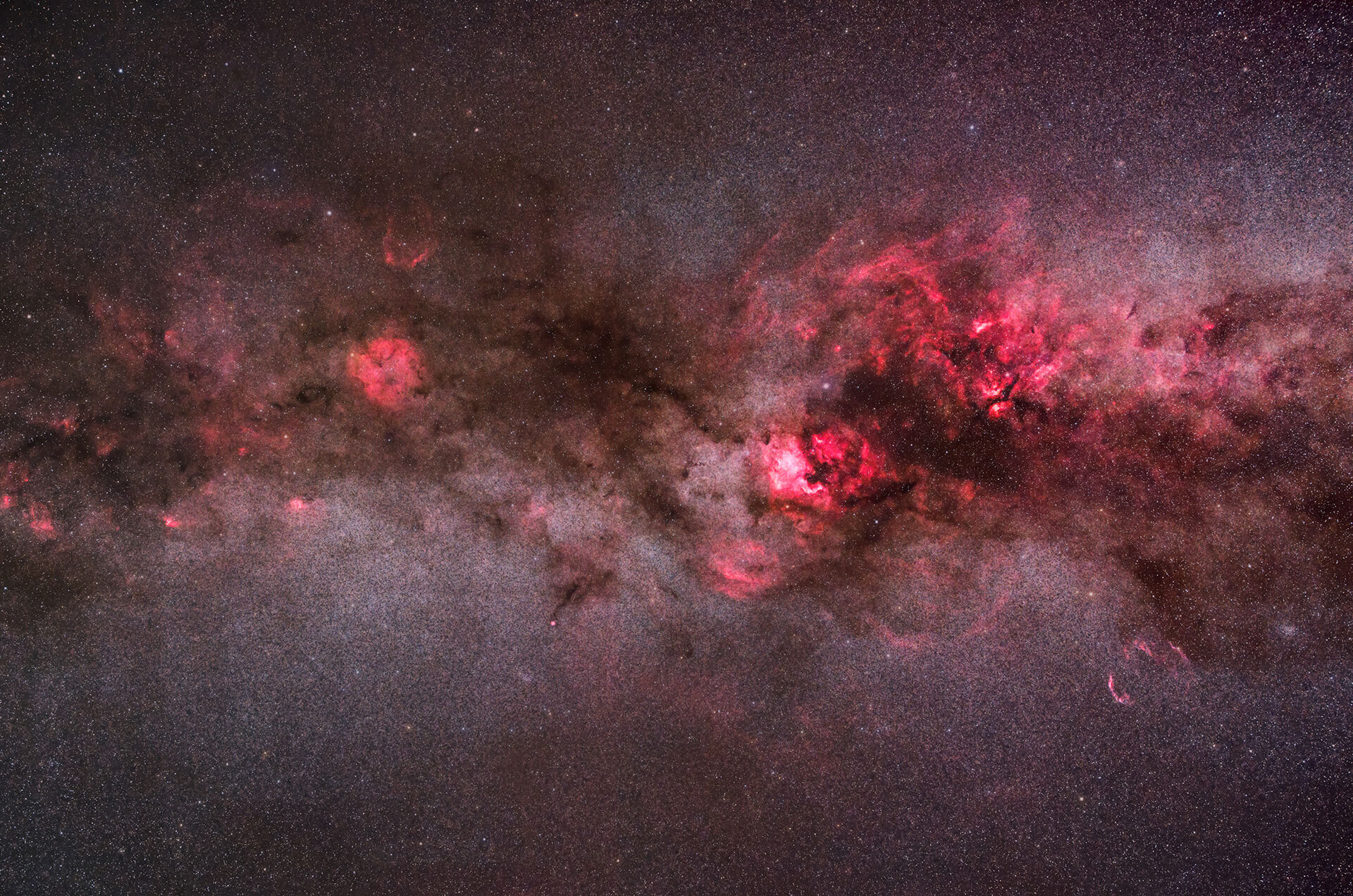Over seven years ago, I stopped making images in color and now only shoot with infrared-converted cameras. I have found that 720nm gives me the broadest range of tonalities for black-and-white, compared to 590nm or 850nm. For me, 590nm is too close to the visible light spectrum, which means my mid-tones would suffer, and 850nm has too much contrast and would require bracketing and blending to capture the full dynamic range.
Although our eyes only see visible light, here are some observations and an approach to learning how to “see” infrared light. With a few tips, you will be well on your way to understanding infrared light.
Don’t Make Any Assumptions Until You Make an Image
I encourage you to be fearless. Experiment when you find something interesting to photograph. Ask yourself, “What would that look like in infrared?” When working with clients in the field, most refuse to press the shutter unless they can visualize the shot. If you only shoot infrared occasionally, chances are you don’t have enough experience to pre-visualize an image through the viewfinder in a spectrum we cannot see. The only way I learned was to shoot many frames and move around the subject until I finally “found” the infrared light.
When I started down the rabbit hole of infrared, there were no books or YouTube videos regarding what I wanted to do: make black-and-white landscape images at 720nm. Lots of information was available for faux color (590nm) but nothing for black-and-white. Only by shooting thousands of infrared frames in all kinds of conditions over the years did I learn what probably would happen and how it would render given my subject (i.e., rocks, foliage, water, skies).
Suggested Infrared Camera Setup for Learning Infrared
I remember the first infrared exposure I made and what a shock it was to my system when the RAW file displayed on the back of my camera. What is THAT funky thing? How do I know what I am looking at? I got the idea (I am sure others did this, but I had no knowledge of it) to set the camera to capture both JPG and RAW. I set the JPG and, therefore, the camera display to monochrome. The RAW file is untouched, but the JPG is black-and-white.
Looking at the image in monochrome on the back of the camera taught me where, how, and if the infrared light appeared in the scene. It is possible you won’t find anything that is reflecting the infrared light.
A big surprise for me was how the different minerals in the rocks in Death Valley render in infrared. Another shocker was that not all foliage will be white. For example, the short needle evergreens in Yellowstone National Park render black, much like visible light, whereas long-needle pine trees glow infrared. You won’t know until you make an image.
A monochrome image on the camera display will instantly reveal your composition. Since my end goal is processing for black-and-white, the monochrome JPG is very close to the final processed IR image.
Now that the camera is set up for black-and-white capture, how do I see the infrared light? I cheat by looking at the monochrome JPG! In most cases, I lean on my years of success and failure in different conditions, but to start, I suggest looking for where visible light (sunlight or moonlight) reflects off the subject in the scene. Where is the light source? Where are you standing in relation to the scene and the light source? What areas are awash in visible light? Where are the shadows? Your “best” shot might be behind you!
Direction of Light
I find that compositions with front light or strong side light are a good starting place to learn about visible or infrared light. Front light means you are standing between the subject and the light source, facing your subject with the light source to your back – just watch out for your shadow in the shot!
Side light is usually a light source to the left or right of the camera. The lower the sun is in the sky, the stronger the light will be. Watch for deep shadows on the “shade” side of your subject. Make sure you always have details in the shadows.
Different Times of Day to Make Infrared Images
Most beginners only shoot infrared during the spring and summer (peak green foliage) and only when the sun is very bright and high in the sky. You can tell what time of day a photograph was taken by looking at the shadows. If the shadows are tight and close to the subject, the sun is high, and it is probably summer. If the shadows are long and away from the light source, the image was taken around sunrise or sunset.
Consider shooting during the blue and golden hours as well. Your images will have a magical feeling at those times of the day. I prefer the early morning, about an hour and a half to two hours before sunrise. For me, by the time the sun comes up, the light becomes harsh, and the shadows can be very dark.
Lens Flare
Shooting into the sun or full moon usually results in flares when using infrared filters, either on the lens or sensor. Flare can be a creative concept, but it is a deal-breaker for me. Flares should not be confused with a lens hotspot. Lenses have special coatings to cut down on flare, but those lens coatings are ineffective when using an infrared-converted camera. Many times, when I review an image on the back of the camera and see a flare, all that is needed is to slightly change the camera’s position relative to the angle of the light source or change the focal length (longer or shorter).
Remember to use your lens hood! And always take the time to look at your preview images thoroughly. I find it very hard to remove flares in post-processing, and it is best to try another shot while you are at the location. I use a Hoodman loupe in bright sun to cover the camera screen. It can be incredibly frustrating when you get a terrific shot, but it is unusable due to faint flare issues.
Stretch Your Comfort Zone
Try experimenting with subjects other than green foliage, such as architecture, monolith rocks on land or at the edge of the sea, cacti or other plants, or morning fog in the trees.
Shoot year-round. Shoot long exposures of clouds or water. One would think brown sea or marsh grasses in the winter would not pop white in infrared, but they do! Chlorophyll gives plants their green color, which turns white in 720nm and 850nm black-and-white infrared. Even though the brown shade of the dried grasses might imply the plant is dead, the chlorophyll still reflects the infrared light all year.
Practice, Experiment, Be Fearless
Infrared light still surprises me constantly. I am never certain what I will get until I press the shutter. Test the light by making the shot. Review it to see the possibility. If the image works for you, keep it. If it doesn’t, ditch it. That’s the workflow. Clients in the field learn quickly not to ask me, “Do you think this shot will look good in infrared?” I always respond, “I don’t know. Make a shot, and let’s look at it.” Very quickly, they understand I am trying to encourage experimentation. When I see it, I will know if the shot worked and has potential through processing. I learn more from my failures than from my successes.
If you process infrared for black-and-white, no matter where you live, you can make beautiful images in the city, the mountains, the seaside, or the forest. No time of year is bad for infrared, and no subject is off-limits. I feel that setting up the infrared camera back to display in black-and-white has made me a better photographer – my compositions quickly improved the more I shot, and I understand the full spectrum of light better by working in infrared.
Penelope Taylor
Penelope Taylor is a New Jersey-based photographic landscape artist. Her father introduced her to film cameras in her early teens. Her passion is traveling throughout the United States and Canada to capture her favorite subject — landscapes. In 2015, she began to exclusively produce work using Nikon digital cameras converted for infrared photography. In 2017, Penelope began to offer infrared-specific landscape photo workshops where she teaches capture and black-and-white processing techniques. She is available for group lectures and one-on-one instruction in person or online.
















